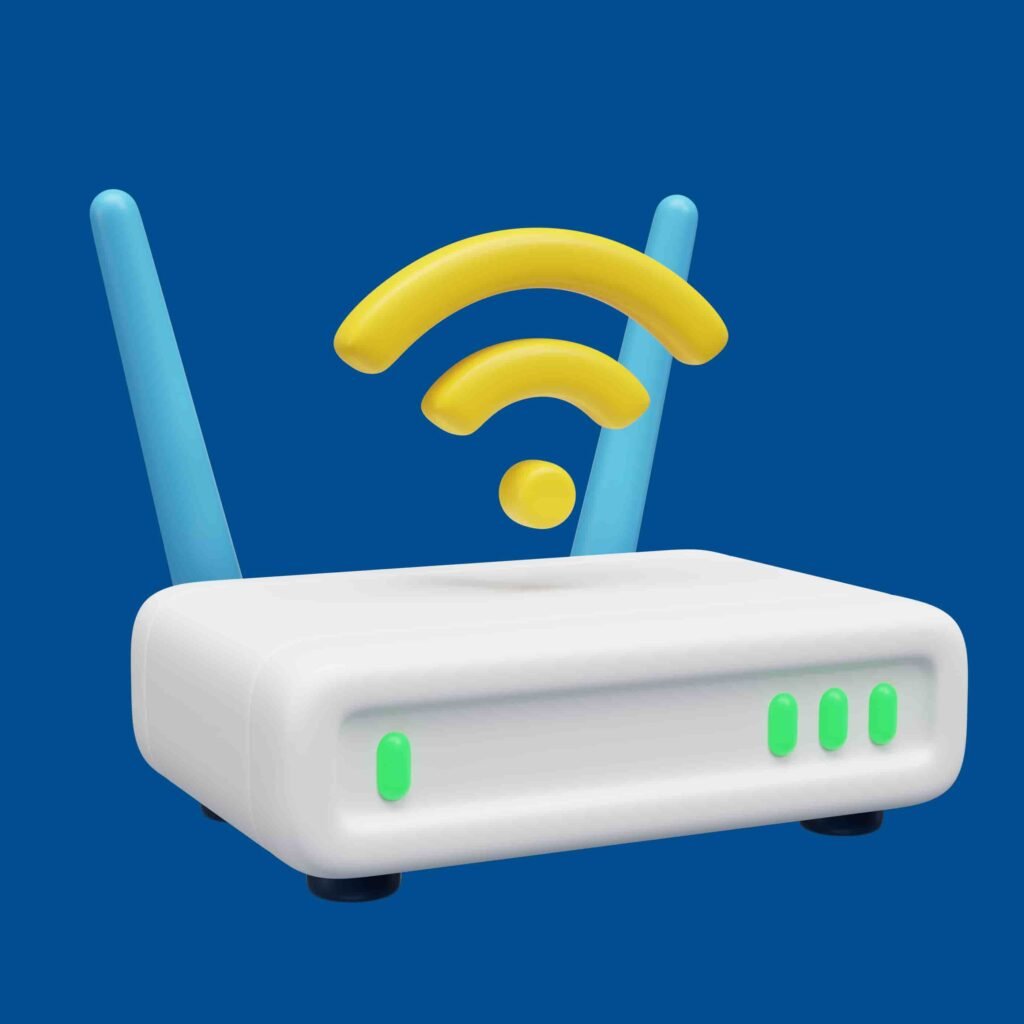
We’ve all been there: your WiFi is connected, your device shows full bars, but when you try to access the internet, it’s like you’re staring into a void. This can be incredibly frustrating, especially when you’re trying to work, stream, or even just check your emails. In this guide, we’ll walk you through why this happens and how to fix it, so you can get back online quickly. Have wifi but no internet connection.
Understanding the Basics
What is WiFi?
Wi-Fi is a wireless networking technology that connects devices such as cellphones, laptops, and tablets to the internet without the use of physical wires. It delivers data via radio waves between your device and a router, which then connects to your Internet Service Provider (ISP).
What is an Internet Connection?
An internet connection refers to the link between your home network (enabled by your router) and the broader internet. This connection can come from various sources, including fiber optics, DSL, cable, or even satellite. The quality and speed of your internet connection depend on the type of service provided by your ISP.
Difference Between WiFi and Internet
It’s vital to recognize that WiFi and the internet are not the same thing. WiFi is the technology that allows your devices to connect to your router wirelessly, while the internet is the worldwide network that enables data to flow from numerous sources. You can have a strong WiFi signal but yet lack internet connectivity if there’s an issue with your ISP or router.
Common Causes of WiFi Without Internet Router Issues
Sometimes the fault lies with your router. It could be broken or outdated, leading it to struggle with keeping a connection to the internet.
ISP Problems
Your Internet Service Provider might be experiencing an outage or other technical issues that disrupt your internet connection.
Device-Specific Issues
Have wifi but no internet connection. Your device might have a problem with its network settings or software that prevents it from accessing the internet, even though it’s connected to WiFi.
Network Configuration Problems
Improperly configured network settings, such as incorrect IP addresses or DNS settings, can also cause connectivity issues.
Basic Troubleshooting Steps
Restarting Your Router
The simplest and often most effective step is to restart your router. This can resolve many issues by resetting your network connection.Turn off the router, then wait around 30 seconds before turning it back on.
Checking Cables and Connections
Ensure that all cables are securely connected to your router and modem. A loose or disconnected cable could be the culprit behind your connectivity problems.
Restarting Your Device
Sometimes the problem is with your device, not the network. Restarting your computer or smartphone can help refresh the connection and resolve minor glitches.
Checking for Service Outages
Visit your ISP’s website or contact their support team to see if there’s a known outage or maintenance work in your area that might be affecting your internet.
Advanced Troubleshooting Steps
Updating Router Firmware
Outdated router firmware can cause various issues, including connectivity problems. Check your router manufacturer’s website for firmware updates and follow their instructions to install them.
Checking Network Settings
Make sure your network settings are correct. For instance, check that your device is set to obtain an IP address automatically if you’re using DHCP.
Resetting Network Settings on Your Device
On some devices, you can reset network settings to resolve issues. This process will remove all saved networks and settings, so you’ll need to reconnect to your WiFi network afterward.
Changing DNS Settings
Sometimes, changing your DNS server settings can help. You can use public DNS servers like Google’s (8.8.8.8 and 8.8.4.4) to see if it resolves your connectivity issues.
Router-Specific Solutions
Resetting Your Router to Factory Settings
If other troubleshooting steps fail, you might need to reset your router to its factory settings. This process will erase all your settings, so you’ll need to set up your network again from scratch.
Adjusting Router Settings (Channel, Frequency)
Changing the wireless channel or frequency band (2.4 GHz vs 5 GHz) can sometimes improve connectivity and resolve interference issues.
Using Different WiFi Bands (2.4 GHz vs 5 GHz)
Different bands can offer different performance characteristics. The 2.4 GHz band offers better range but lower speed, while the 5 GHz band provides faster speeds but with a shorter range.
ISP-Related Solutions
Contacting Your ISP for Support
If you suspect the issue is with your ISP, contact their support team. They can check for issues on their end and provide guidance for resolving connectivity problems.
Checking for Local Outages
ISPs often have websites or customer service lines that provide information on current outages or maintenance work in your area.
Upgrading Your Internet Plan
If your current plan isn’t meeting your needs, consider upgrading to a higher-speed plan. Sometimes, slow or unreliable internet can be due to insufficient bandwidth.
Device-Specific Solutions
Troubleshooting on Windows
For Windows devices, check the Network Troubleshooter tool, which can automatically detect and fix many network-related issues.
Troubleshooting on macOS
On macOS, you can use the Network Diagnostics tool to identify and resolve connectivity issues. Make sure your WiFi settings are correctly configured and try reconnecting.
Troubleshooting on Mobile Devices (iOS and Android)
For mobile devices, ensure that Airplane Mode is off, and try toggling WiFi off and on. You might also need to forget the network and reconnect.
Network Configuration Fixes
Correcting IP Address Conflicts
Ensure that your device is not using a conflicting IP address. You can release and renew your IP address through your network settings.
Configuring Static IP Addresses
In some cases, setting a static IP address can help resolve connectivity issues. For further information on how to accomplish this, consult your router’s handbook.
Adjusting Firewall and Security Settings
Make sure your firewall or security software isn’t blocking your internet connection. You may need to adjust settings or create exceptions for your network.
Preventative Measures
Regular Router Maintenance
Keep your router in a clean, well-ventilated area and periodically check for firmware updates to keep it functioning properly.
Updating Firmware and Software
Regularly update your router’s firmware and your device’s software to ensure compatibility and security.
Keeping Your Network Secure
Ensure your network is secure by using a strong password and enabling encryption. This can help prevent unauthorized access and potential connectivity issues.
When to Seek Professional Help
Identifying Persistent Issues
If you’ve tried all troubleshooting steps and still experience issues, it might be time to seek professional help. Persistent problems can indicate a deeper issue with your hardware or network setup.
Deciding Between Repair or Replacement
In some cases, it may be more cost-effective to replace faulty hardware rather than repairing it. Consult with a professional to determine the best course of action.
Have wifi connection but no internet with xfiniti wifi
Having a WiFi connection but no internet with Xfinity can be frustrating. Here’s a quick guide to troubleshooting this issue:
- Restart Your Router: Unplug your Xfinity router, wait 30 seconds, and plug it back in. This can often resolve connectivity issues.
- Check for Service Outages: Visit Xfinity’s website or use their app to see if there’s a local outage affecting your service.
- Inspect Cables: Ensure all cables are securely connected to your router and modem.
- Device Troubleshooting: Restart your device and check if it can connect to other networks.
- Contact Xfinity Support: If the issue persists, reach out to Xfinity customer support for further assistance. They can check your connection and provide specific solutions.
How to solve can’t provide internet?
If you’re seeing a “can’t provide internet” error, follow these steps to troubleshoot:
- Restart Your Router and Device: Power cycle both your router and the device you’re using.After 30 seconds, unplug the router and connect it back in. To restore the connection, restart your smartphone.
- Check Connections: Ensure all cables between your router and modem are securely connected. Your internet connection may be interrupted by a disconnected or loose cable.
- Verify Service Status: Check your ISP’s website or app for any service outages in your area that might be affecting your connection.
- Update Network Settings: Make sure your device’s network settings are correctly configured, including IP and DNS settings.
- Contact Support: If the problem persists, contact your ISP’s customer support for assistance. They can diagnose issues and help restore your internet service.
Conclusion
Experiencing WiFi connectivity issues despite having a signal can be frustrating, but with the right approach, you can resolve most problems quickly. By following the troubleshooting steps outlined in this guide, you should be able to identify and fix common issues that cause WiFi connections to fail. Remember to keep your equipment updated and secure to prevent future problems.
FAQs
Why does my WiFi signal show but I have no internet?
This issue often stems from problems with your router, ISP, or network settings.You can help fix the problem by troubleshooting these areas.
How can I resolve a “No Internet” notification on my gadget?
Try restarting your router and device, checking cables, and ensuring your network settings are correct. You may also need to contact your ISP if the issue persists.
What should I do if restarting the router doesn’t work?
If restarting the router doesn’t resolve the issue, try updating the router firmware, checking for IP address conflicts, or contacting your ISP for support.
How can I tell if the issue is with my ISP or my router?
Check for service outages with your ISP and test your connection with another device. If the problem persists across multiple devices, the issue might be with your ISP.
Is there a way to prevent WiFi connection issues in the future?
Regular maintenance, keeping your router and device updated, and ensuring network security can help prevent future WiFi connection issues.

